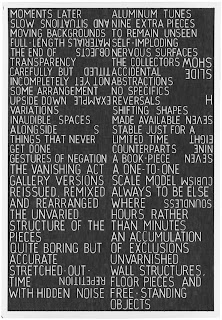© Ante Timmermans, NR.5 (LEITER), 117 x 78 cm, oilstick op print, 2012
'The motor behind Ante Timmermans' artistic production is the routines imposed by society. In his work we can discover a microscopic analysis of human activities as much as an all- encompassing universal synthesis of philosophical thoughts. In the large drawings it looks like a complex chaos dominates. However on closer observation, as in an ants nest, we can recognise repeating structures and patterns. Ante maps the everyday rut that the French call 'metro-boulot-dodo' in a seemingly scientific way. Even his own uncontrolled pencil-marks can be seen as an affirmation or disavowal of his own routine actions, as a release mechanism or programmed compulsiveness. In other drawings the city or some aspects of the city are more explicitly presented as symbols of our habit-controlled behaviour. The skyline of a big city becomes a shaky tower of Babel, does it persist through its own absurdity or through its manipulative capacities?' (1)
Lecture, Campus Congres, Kerkstraat 45, Antwerp
2012, December 5, 6 pm
Free entrance
(1) Text (fragment): Tanguy Eeckhout Translation (Dutch-English): Literal 2006
notes from the lecture
A remarkable question from one of the students for Ante: 'Do you believe in reincarnation?' Ante was 1 second silent, surprised, but answered short and clear 'no'.



